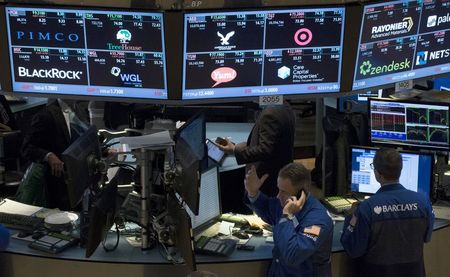Artificial Intelligence (AI) and Machine Learning (ML) are two rapidly growing fields that have revolutionized the way we process and analyze data. AI refers to the development of computer systems that can perform tasks that typically require human intelligence, such as visual perception, speech recognition, decision-making, and natural language processing. ML, on the other hand, is a subset of AI that involves the use of algorithms and statistical models to enable computers to learn from data without being explicitly programmed.
In the financial industry, AI and ML have become essential tools for data analysis, risk management, fraud detection, and investment decision-making. AI and ML can be used to analyze market trends, optimize portfolio management, predict stock prices, and automate trading strategies. Furthermore, AI and ML can be used to improve customer experience by enabling personalized financial advice and automated customer service.
Although AI and ML have shown tremendous potential for transforming various industries, they are not without their challenges and limitations. Reference [1] discussed the issue of AI aging, i.e. temporal quality degradation in AI models. The authors pointed out,
As AI models continue to advance into many real-life applications, their ability to maintain reliable quality over time becomes increasingly important. The principal challenge in this task stems from the very nature of current machine learning models, dependent on the data as it was at the time of training. In this study, we present the first analysis of AI “aging”: the complex, multifaceted phenomenon of AI model quality degradation as more time passes since the last model training cycle. Using datasets from four different industries (healthcare operations, transportation, finance, and weather) and four standard machine learning models, we identify and describe the main temporal degradation patterns. We also demonstrate the principal differences between temporal model degradation and related concepts that have been explored previously, such as data concept drift and continuous learning. Finally, we indicate potential causes of temporal degradation, and suggest approaches to detecting aging and reducing its impact.
Although the paper demonstrated the existence of AI model degradation in various industries, we note that the problem of model degradation is well-known in finance for decades due to the non-stationary nature of financial time series and constantly changing market conditions.
The authors also highlighted the importance of model retraining in order to cope with degradation. Specifically, we would need to
- Develop a trigger to signal when the model must be retrained,
- Develop an efficient and robust mechanism for automatic model retraining.
These problems are also well-known in finance and the solution is not trivial.
Let us know what you think in the comments below or in the discussion forum.
References
[1] Daniel Vela, Andrew Sharp, Richard Zhang, Trang Nguyen, An Hoang & Oleg S. Pianykh, Temporal quality degradation in AI models, Sci Rep 12, 11654 (2022). https://doi.org/10.1038/s41598-022-15245-z
Further questions
What's your question? Ask it in the discussion forum
Have an answer to the questions below? Post it here or in the forum




